A lot of the time when a game in development gets interesting, it seems like the progress of the entire project speeds up at a certain point, and I feel like Paper Mario: Sticker Star suddenly sped up like that. Nakajima-san, you’ve been involved with a variety of projects, so I think you have experienced that feeling of getting into a groove and speeding up several times. What about this time?
Encountering Kudo-san was what threw the first switch. His Mario-like sense provided all kinds of stimulation and I felt like I could finally see the end.
You mean that you could see an image of the goal?
Yes. In the process of making a videogame, it’s important that someone, even one person, sees what point we need to reach for it to be done.
During the confusion at the beginning, everyone was quiet at the meetings and conversation never took off.
Tanabe-san always said, “No one’s energetic at the meetings!”
Being energetic is important! (laughs)
With regard to the maps I worked on, they had quite a lot of objects and there were big changes several times along the way. Even if I made a lot, I didn’t feel like I was getting anywhere, so I think I was proceeding cautiously the whole time.
But towards the end of development, each person working on the maps was able to determine how far they needed to go to be done.
When more people on the team are able to grasp each finish line for themselves, development suddenly takes off.
Yes. In the latter half, the people making events, the people working on effects and the people making maps could each see their respective goals, so communication was also quite smooth and bad places easily shaped up after a quick conversation.
Kudo-san’s voice is probably the loudest one at IS. I could tell what he was talking about even from three rows of desks away! (laughs) I would think, “I should hear this,” and listen in, and later Kudo-san would come to my desk and just say, “So there you have it.” (laughs) We communicated that way a lot.
And he would immediately reply, “Understood!”
No explanation necessary. (laughs)
Kudo-san dragged in everyone – but in a good way. That’s another thing that went on.
As teams grow in size compared to before, sharing information with everyone becomes a bigger challenge. In times like that, I think it’s important to have an environment whereby people can hear what relates to them without going to the trouble of holding a meeting.
A big thing for me was digging into hands-on development about six days a week and working together with everyone for such a long time. If I had to come from Tokyo once or twice a month to talk various matters over all at once and then see how it was handled at a later date, I don’t think it would have worked. It was great that we could meet and talk as soon as I thought of something and that I could see the results of what we tried right then and there.
I just remembered another reason for the speed-up. One time, Tanabe-san asked, “Is everyone playing the game?” Everyone was busy throughout the long development period and focused on the parts they were working on, but weren’t playing through the overall game.
That’s right.
So then we were like, “Let’s play the game!” and suspended the team’s work for about three days to do just that. Then everyone realised it was actually coming together and the team’s energy level clearly changed.
This time, you broke down the format for the standard RPG as well as the format that IS had for Paper Mario. Not doing the same thing that secured a certain amount of success in the past is bound to be unnerving and scary.
When we talked about each part, our target for comparison was past experience and we compared it to games in similar genres, but only talking about those things didn’t get us very far. We hadn’t switched over to the fact that these were completely new challenges.
But it was important that you noticed that and shared the overall results.
When I think about it now, those three days were incredibly significant.
Yes. Just like that, all kinds of people became involved in making Paper Mario: Sticker Star. Lastly, as the makers of the game, could you each say something to the fans about what you want to convey or draw their attention to? Let’s start with you guys from IS.
Okay, I’ll start. The game mechanics are quite different from previous Paper Mario games, but without a doubt, it turned out to be a Paper Mario game. Please, look forward to it!
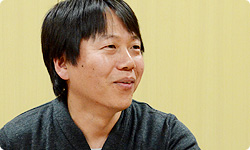
Believe it or not, we really made the entire game world out of paper ! But even so, this world that’s unlike any you’ve ever seen before holds lots of sights and happenings that are impossible in reality. I hope people will look at that and be surprised.
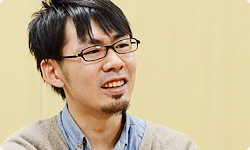
I’ve been involved throughout the whole series, but this is the first time the game has a world map, so you can play the courses over and over. We tried to make it enjoyable no matter when you play or which areas you play, so I hope people will really get into it!
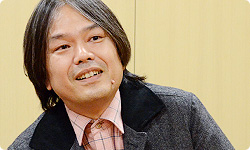
You can take on the same courses again and play the game thoroughly. Okay, Kudo-san?
Well, as mentioned before, the mechanics present new challenges and the game world represents a new start. We worked hard so that this game would become the new standard for future Paper Mario games, so please play it to the fullest!
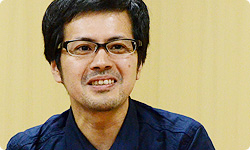
Okay. Tanabe-san, you’re last.
Everyone else already said a whole lot! (laughs) After release, you will either find it to be fun or you won’t. After you buy and play it, I’d like to know people’s impressions about this game. If you say it’s fun, then I want to make another one. I hope you enjoy it!
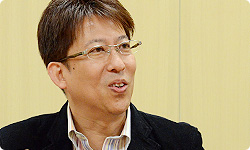
It looks like development was fun, so there’s no way that this game – which came about from the various episodes you told me about today – could be no fun. When you try to renew something, there is resistance, unease and fear – until the goal comes into view, everyone worries and only advances cautiously. Listening to you, however, I strongly sense that when the goal came into view, it was possible for the team to put so much energy into it that it almost seemed like new people were working on the game. It took a little while for Paper Mario: Sticker Star to make it out into the world, but that just shows how much time and energy people have placed on it. There are probably still all kinds of interesting aspects of it that we didn’t talk about today, so I hope everyone will enjoy those parts as well. Thank you for today.
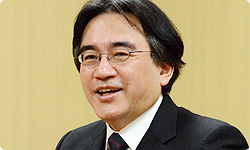
Thank you!
© 2024 Nintendo.